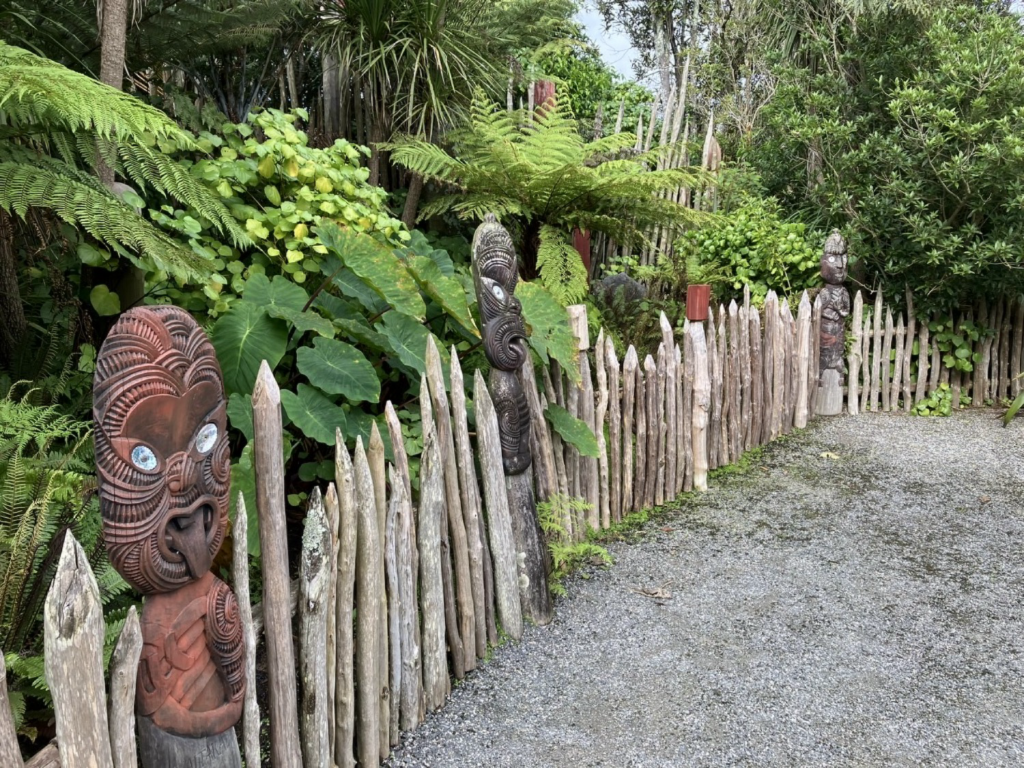Hamilton Gardens is a public garden park in the south of Hamilton, New Zealand, owned and managed by Hamilton City Council. The 54-hectare park is situated on the banks of the Waikato River and includes enclosed gardens, open lawns, a lake, a nursery, a convention centre and the Hamilton East Cemetery. It is the Waikato region’s most popular visitor attraction, attracting more than 1 million people and hosting more than 2,000 events per year.

Each of the many gardens within the park focuses on a specific theme or historic re-creation. Trying to convey the entirety of the Park within a single post would would be a very long read. Therefore, this post is one of a continuing series on the subject, with selected images of various gardens. Each visit to Hamilton Gardens offers unique experience, as the flora and presentation changes throughout the year. Here I present some images from my latest visit, with descriptions and commentary borrowed from the original guides.
The Japanese Garden of Contemplation
The Japanese Garden of Contemplation is an example of the 14th century to 16th century garden from the Muromachi period, designed for meditation, study and quiet contemplation. The garden includes carefully laid out stones in the Abbott’s Quarters, a traditional pavilion, and a vast restful pond.
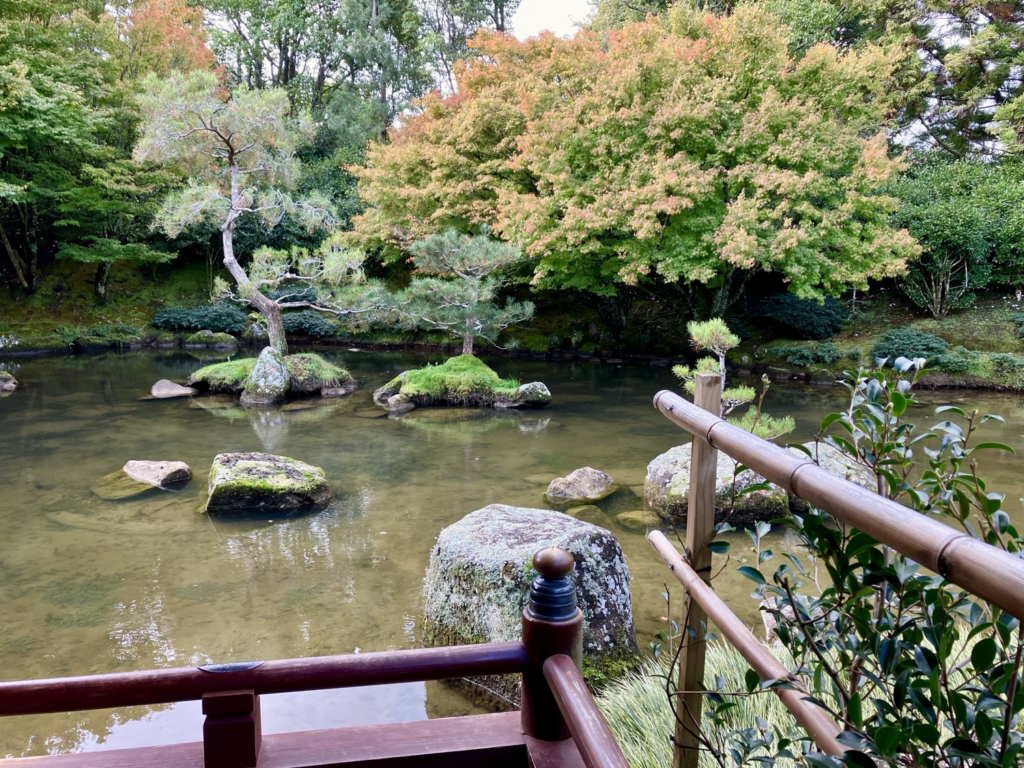
The karesansui (dry landscape) gardens of the Muromachi era of Japanese history are amongst the most austere garden designs ever created. Within tightly bounded compositions of gravel, rocks, and only the minimum of vegetation, they evoke vast landscapes of mountains, oceans, and forests – although the final interpretation of the arrangement is always up to the individual viewer.
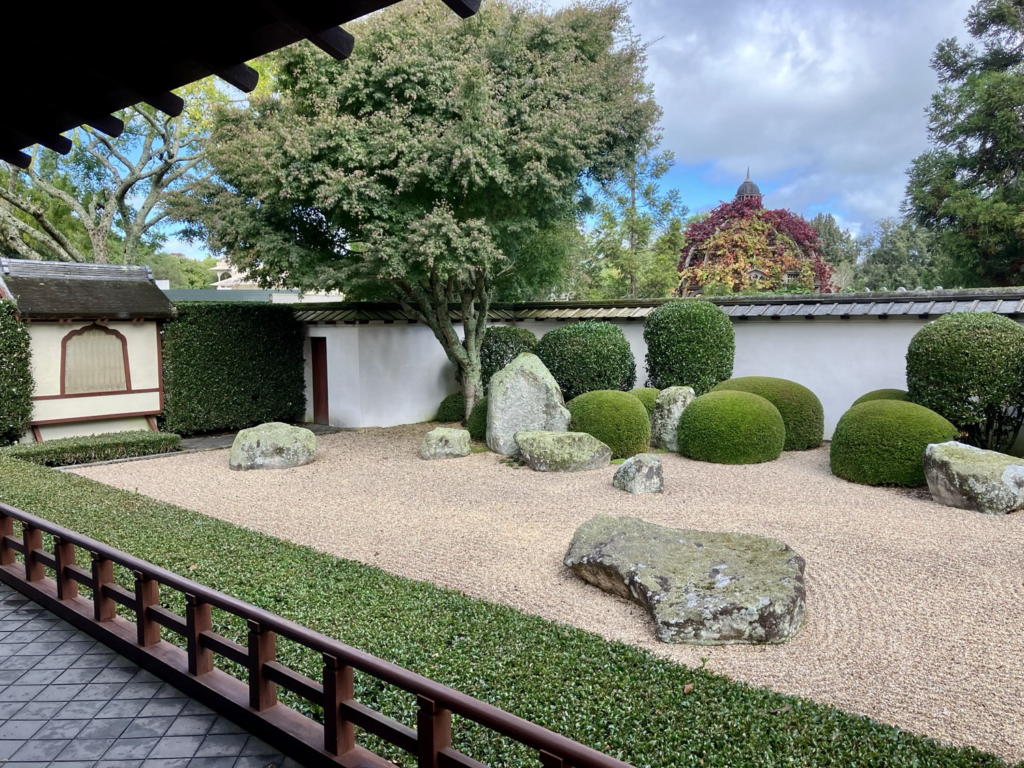
These landscape gardens are often called ‘Zen gardens’ because the most renowned examples are found in Zen temple complexes in Japan. However, while their underlying design does use Zen Buddhist concepts of ‘the void’, ‘movement without movement’, the deep sense of contemplation that they produce in the viewer goes beyond any particular religion and can be enjoyed by everybody.
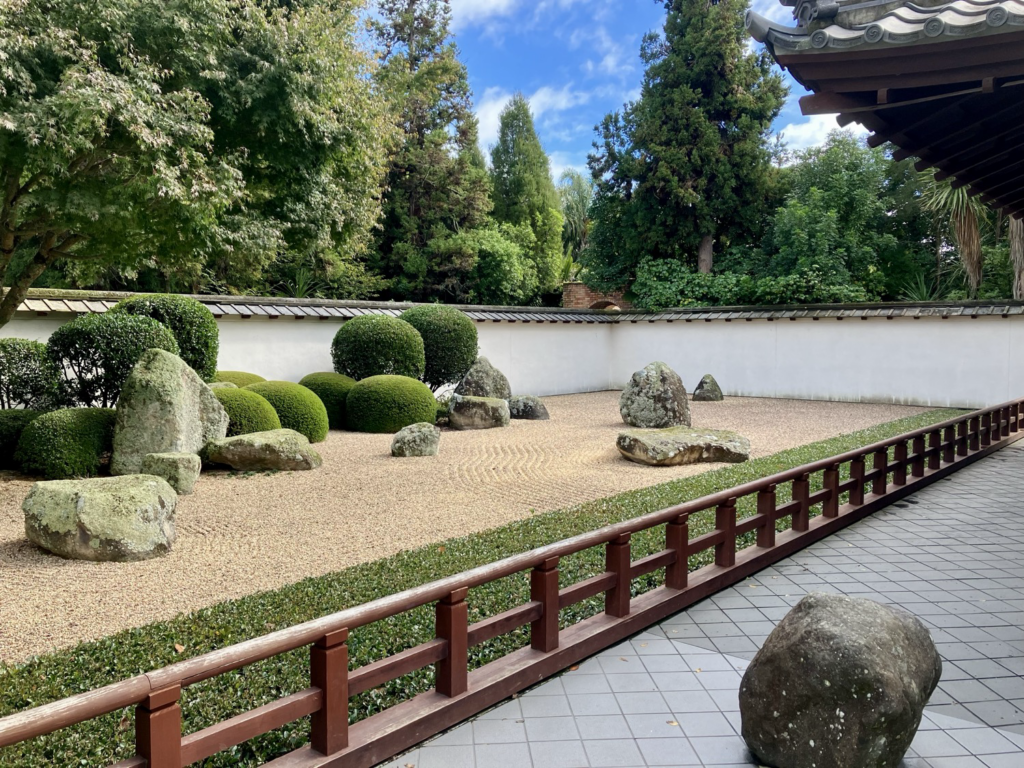
The Italian Renaissance Garden
The Italian Renaissance Garden is based on the Renaissance gardens of the 15th century or 16th century which were used to rationalise, control and improve nature and draw on Greek, Roman, Medieval and Islamic traditions. The garden includes a Romulus and Remus statue at the entrance, an upper level under arched trellis work, a lower level with flower beds and pavilion, and an outdoor theatre.
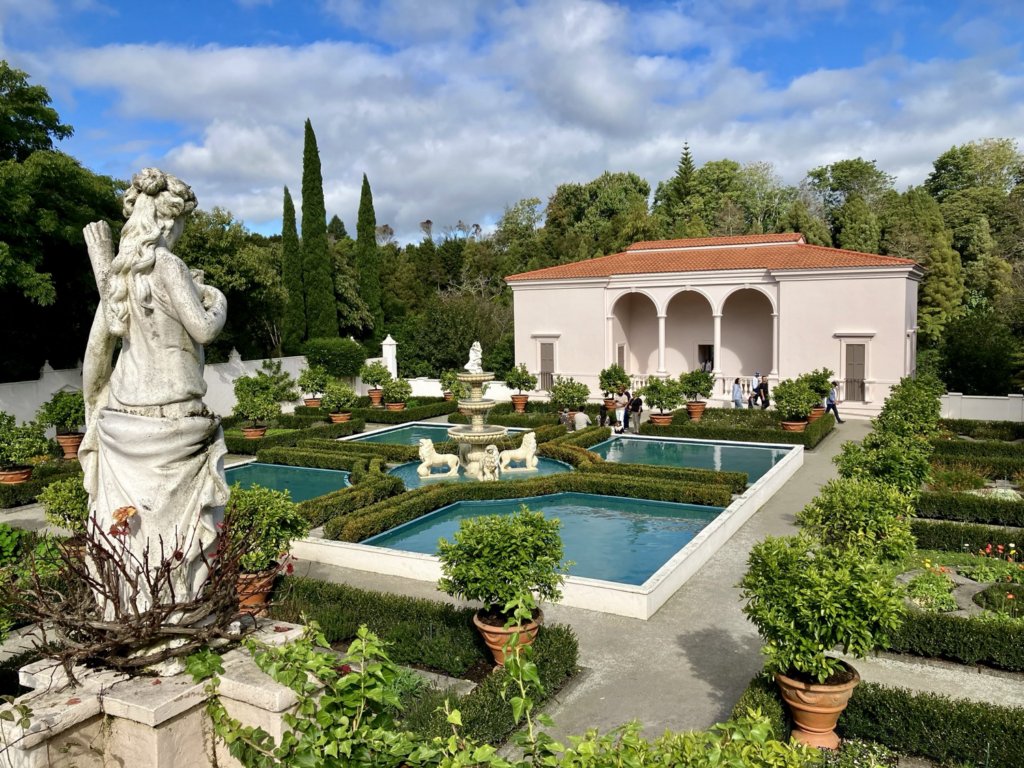
Renaissance gardens were also an evolution of the Medieval garden and many of the elements from that earlier era were retained such as the high surrounding walls, flat square beds with edges lined with plants, beds of simples, flowery meads, and the arched trellis work. The major difference in the Renaissance gardens was the introduction of a strong central axis and the discovery of linear perspective as a link between the main buildings and the different portions of the garden. Gardens became separated into compartments that could be named, enclosed, and hidden to create an unfolding sequence of spaces. The axis organised and unified the whole composition.
The Tudor Garden
This traditional garden reflects the fascination sixteenth century English aristocracy had with geometric patterns and symbolism with double meanings.
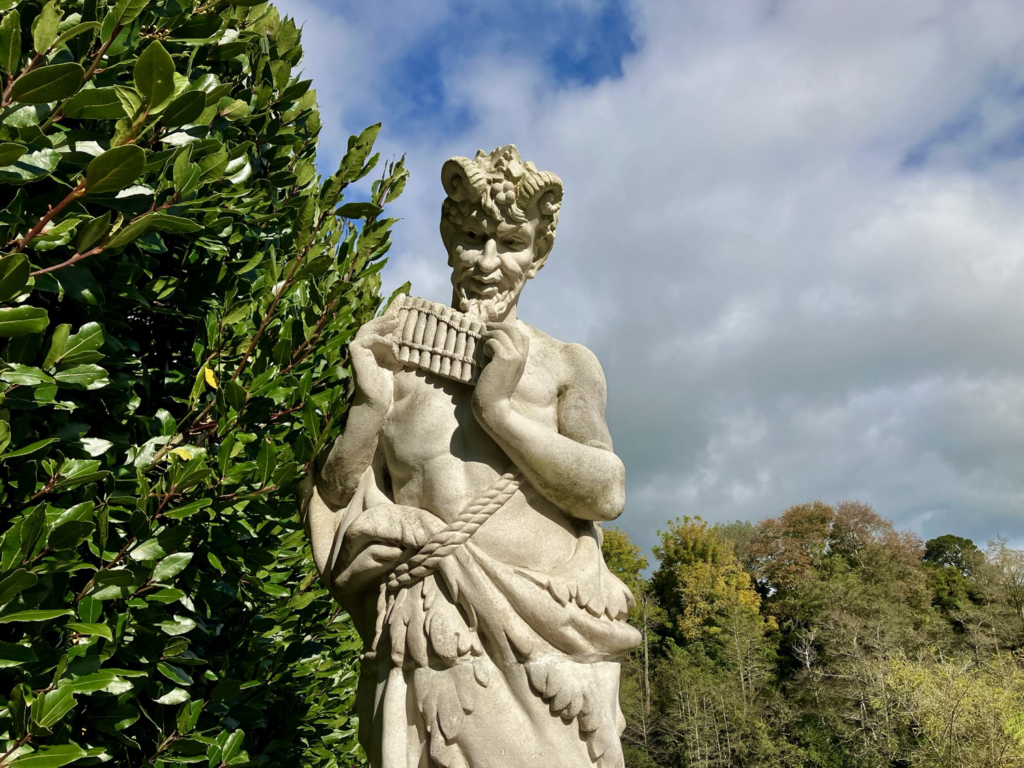
The Tudor Garden is an interpretation of a 16th-century English Renaissance garden with red and black stone knot gardens, Elizabethan walls, and a stone pavilion. The garden design is based on the drawings of the sixteenth-century writer Didymus Mountain and reflects aristocrats’ fascination with geometric patterns and symbols.
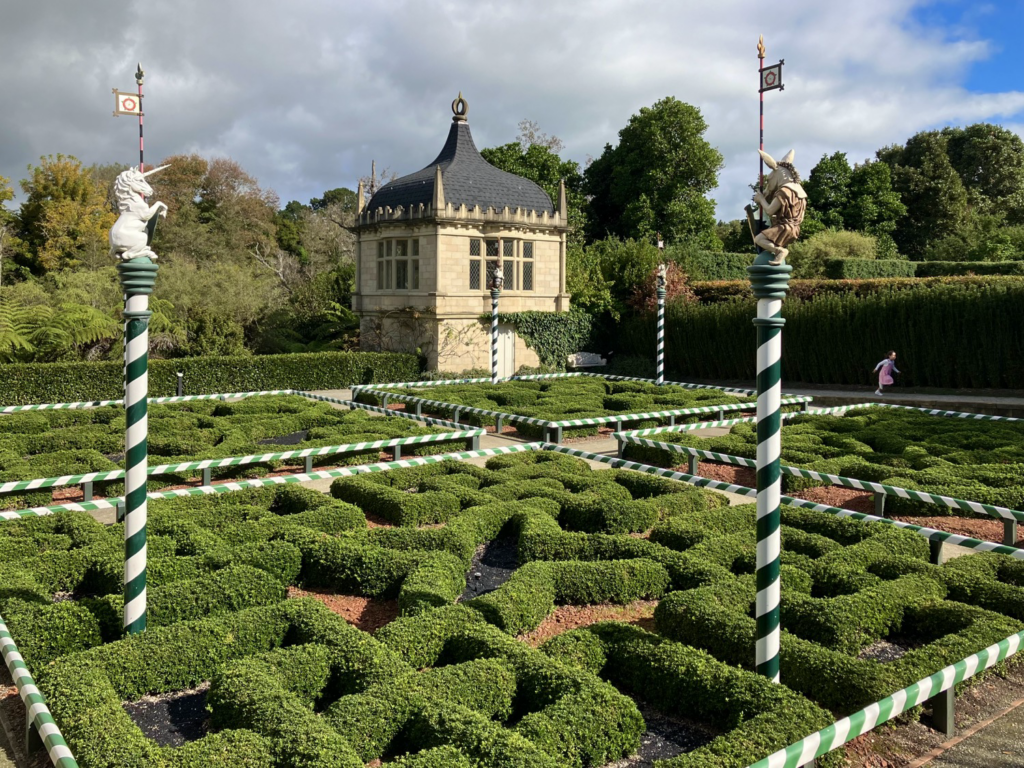
The Concept Garden
On land use maps there’s usually a legend of square boxes each with a different colour or texture denoting the different land uses. In this garden the nine square panels each represent one of the land uses on the legend in old school atlases. Pasture is represented by the grass, native bush by Muehlenbeckia astonii, urban areas by White Carpet roses, horticultural by citrus trees, tussock grassland by Carex buchananii, coniferous forest by Pinus mugo, scrubland by Leptospermum scoparium, wetland by Apodasmia and water bodies by the central pool.
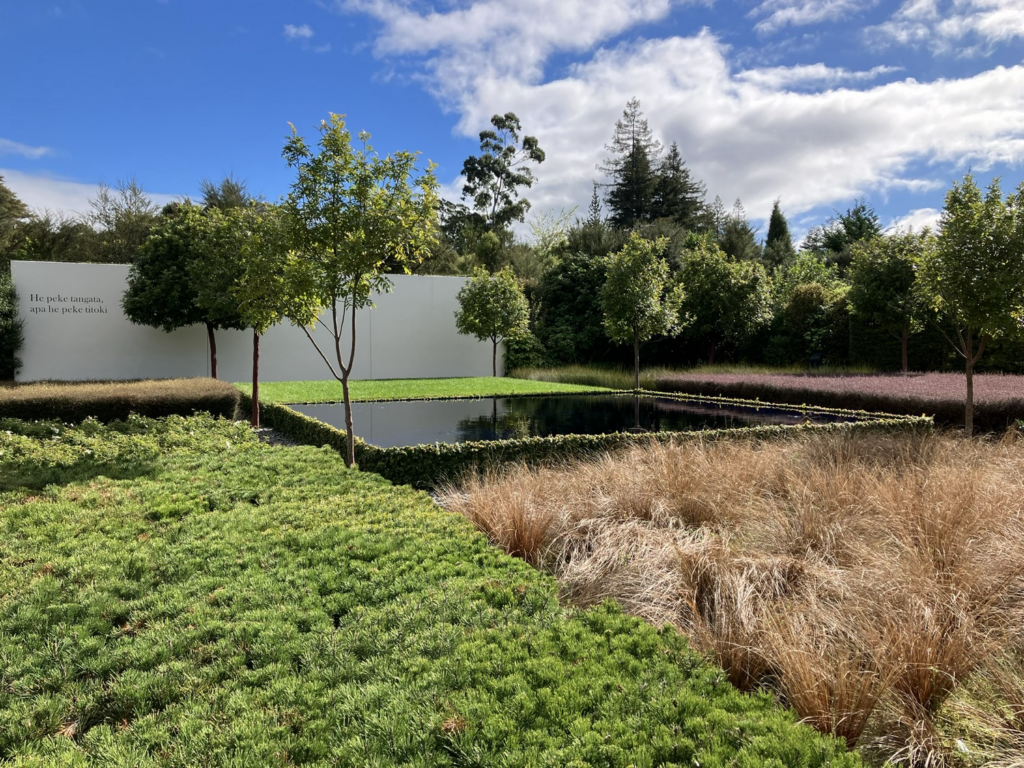
The whakataukii inscribed on the white wall is:
He peke tangata, apa he peke titoki
The human family lives on while the branch of the titoki falls and decays.
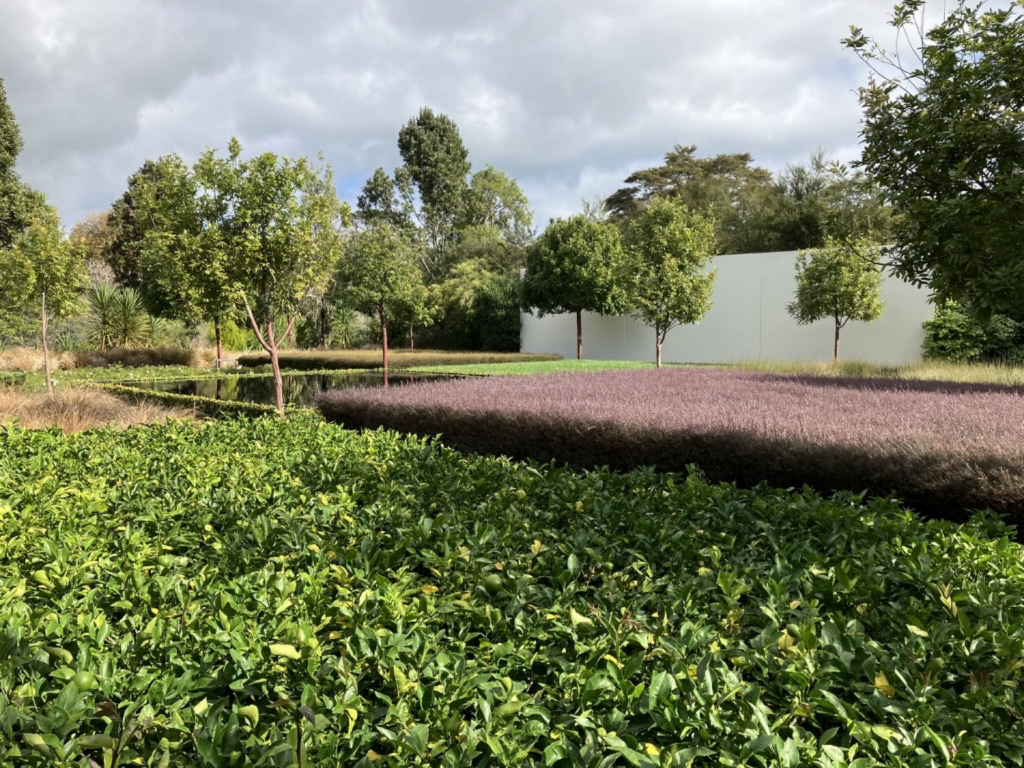
The second whakataukii is inscribed on a majestic steel pipe which over decades will gradually rust away:
Whatungarongaro te tangata toituu te whenua
As man disappears from sight, the land remains.
The message of this interpretation is that in the end, nature is going to win.
Picturesque Garden
The Picturesque Garden is wild landscape, with artificial historic features representing 18th century Romantic period garden traditions.
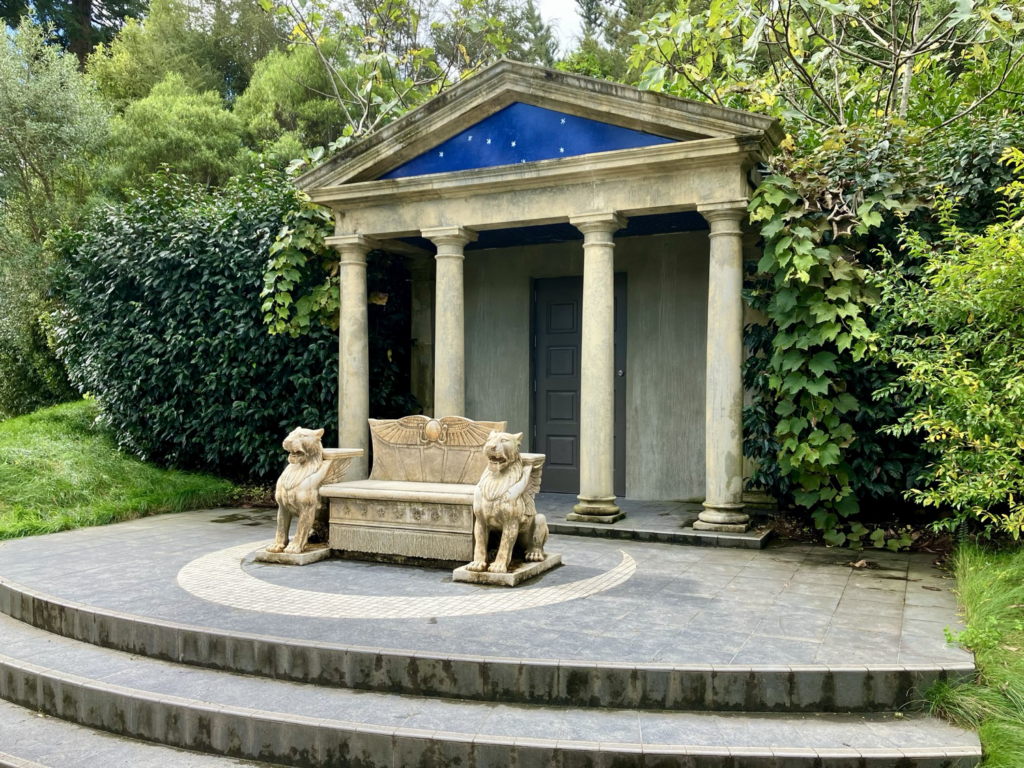
Rather than formality and control, garden design was inspired by the new fashion for paintings of wild, romantic landscapes. With banks of long grass, artificially aged structures, and respect for local flora, the Picturesque Garden movement made a revolutionary statement about the rigors of aristocracy.
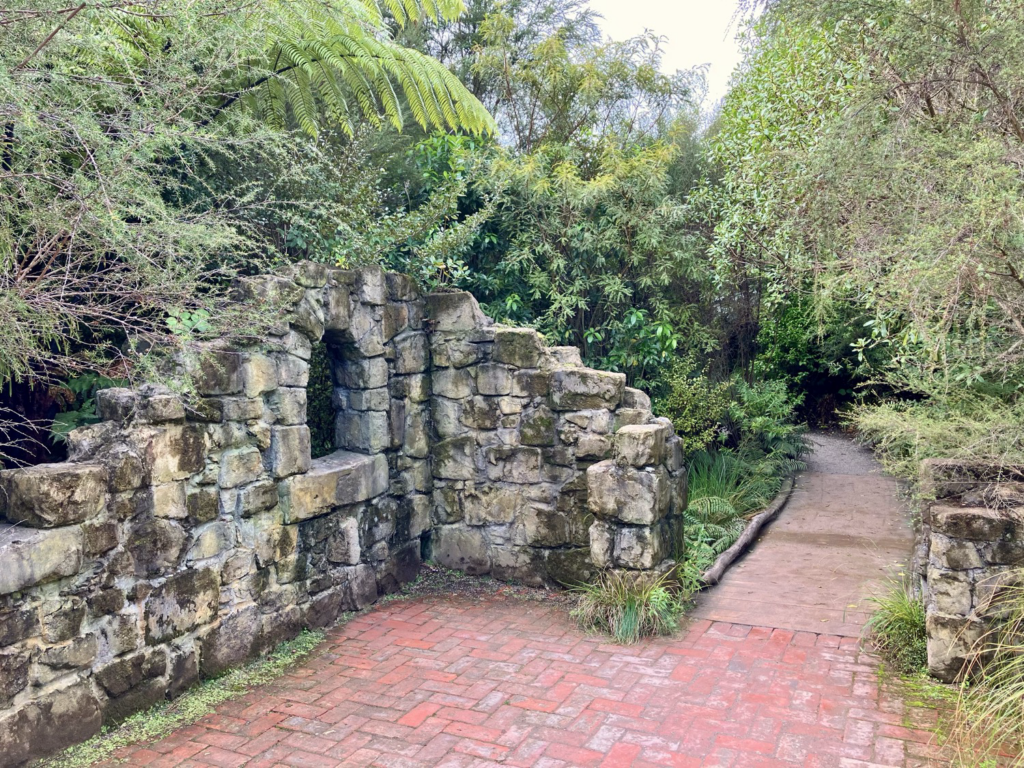
These gardens were intended to appeal not only to the eyes, but to the heart and mind. Often they were deliberately kept wild and overgrown.
Te Parapara Garden
Te Parapara is a traditional Māori garden that demonstrates how local Māori grew food in gardens on the banks of the Waikato River before European settlement. It occupies part of the site of a pre-European settlement of the same name. It was the site of fertile gardens and sacred rituals for the harvesting of food crops, and was the home to famous Ngāti Wairere chief Haanui. The garden is part of Hamilton City Council’s long-term plan for the development and restoration of the Waikato River.
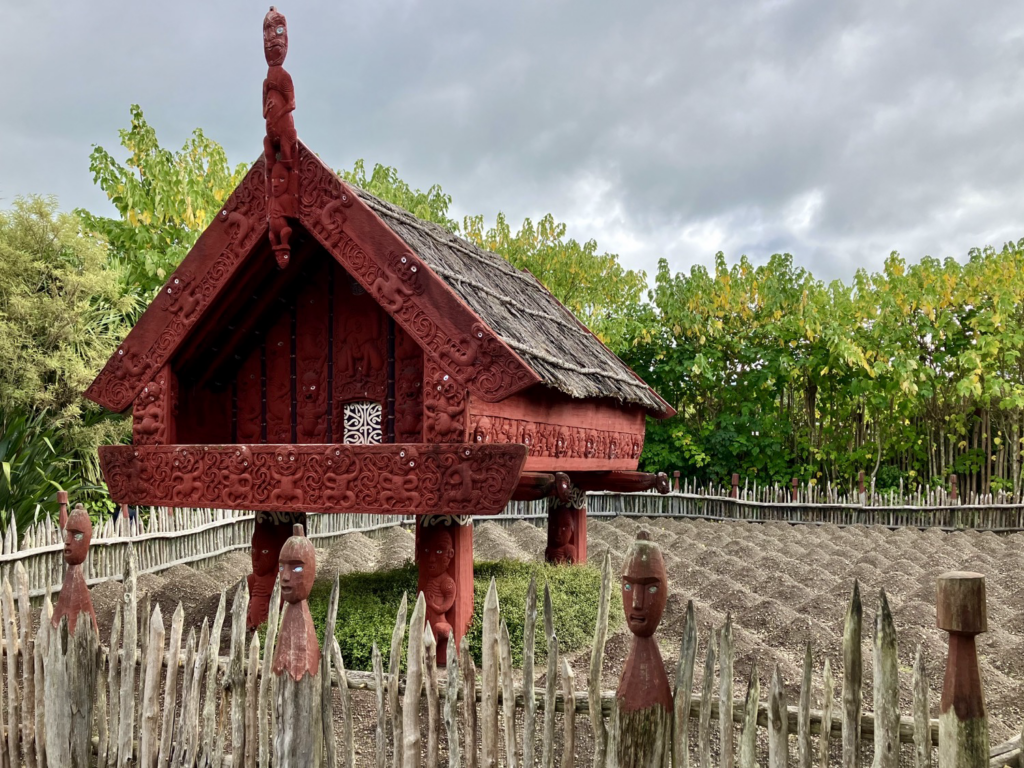
The garden tells the story of the establishment of cultivated food crops in the Waikato, from the landing of the Tainui waka to the era of the expansive plantations that were described in the 1840s by European visitors. It shows how the first Polynesian arrivals to Aotearoa used the plants they found growing wild and it demonstrates the new techniques they developed for growing tropical crops in a sub-tropical climate. The garden also shows the cultural context that integrated and regulated the agronomic life of pre-European Waikato/Ngati Wairere society.
